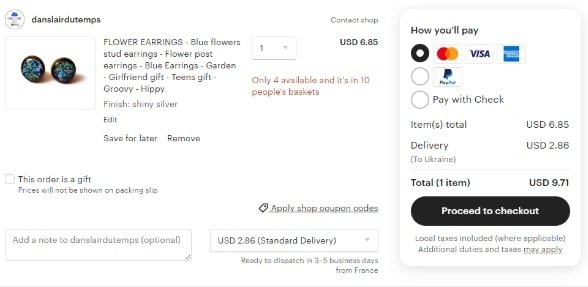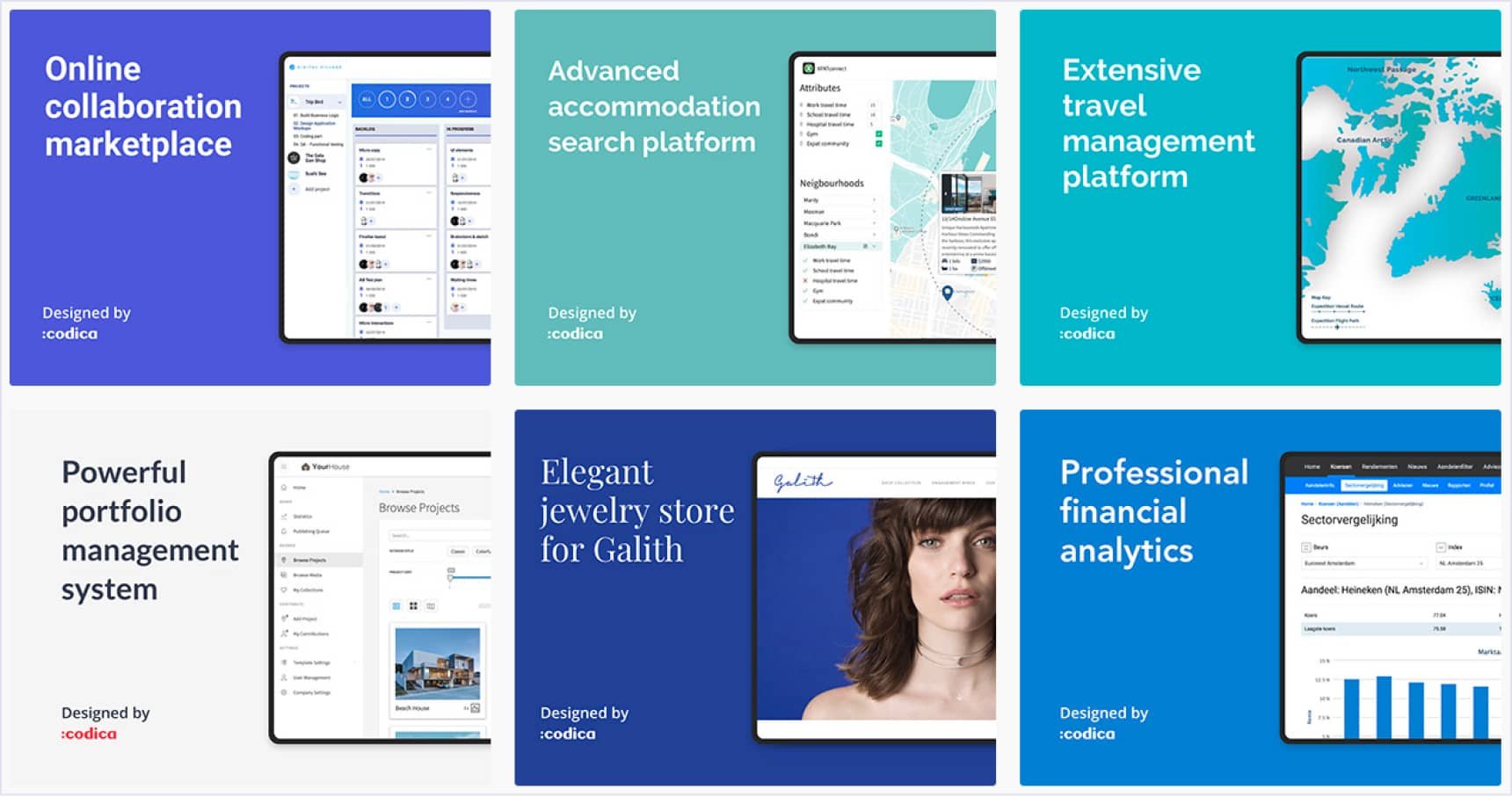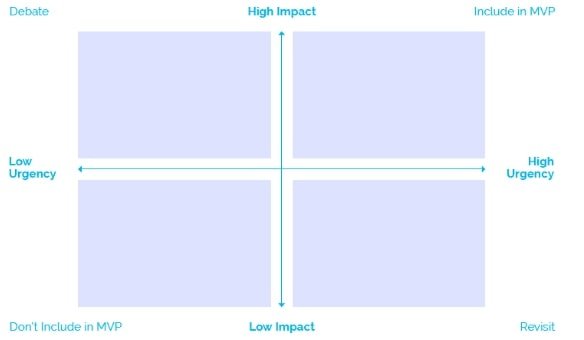Our previous article covered the key steps to take before moving to online marketplace development. We have discussed such important issues as the niche, target audience, and monetization strategy. You found out how a reliable co-founder and a well-written business plan can help you launch a profitable e-commerce startup.
Today we will talk about the main stages of building an online marketplace. These are choosing the required features, the development approach, and software consultancy. You will also know how to improve and promote your platform.
Armed with this thorough guide, you will learn how to launch a marketplace that both your buyers and sellers will love.
1. Define the functionality
Let’s start with the basic features any online marketplace should have. These functions will make your e-commerce website convenient for both parties.
Product page. Give a comprehensive description of selling items to potential buyers. High-quality photos and videos, detailed descriptions - everything matters.
Shopping cart. As you are developing an e-commerce website, this option is a priority.

Security options. Make your marketplace as secure as possible. SSL certificates, two-factor authentication, and firewalls will help you protect your product.
Payment methods. Enable users to choose amongst a variety of payment options. The most popular payment gateways are PayPal, Stripe, Braintree, and WePay.
Search feature. The chances are that your multi-vendor platform will offer a great number of products. So, it would be reasonable to create a search box. Make sure it is noticeable. Place the search bar where users expect to find it. According to UX Booth, the most suitable place for the search box is the top right or top left of the pages on your site.
Wishlists. With this feature, shoppers can create collections of items they would like to buy later. When users are ready to make a purchase, they quickly find the product needed in the wishlists.
Sign In/ Sign Up Form. There are several reasons why you need to ask your visitors to create an account on your platform. First, registered users can choose the platform role - a vendor or a buyer. Second, the sign up improves customer experience. How? Well, it enables customers to track the order process or view previously purchased items. Besides, such a feature as a wishlist is usually available for registered users only. Finally, registration allows customers to get personalized on-site recommendations.
Admin panel. Simply put, an admin dashboard helps manage everything related to your e-commerce website. For example, this functionality allows you to track orders, payment, and shipping. Moreover, you can view abandoned checkout and create draft orders.
Shipping. With this feature, shoppers can choose the preferred delivery option offered by vendors.
This is functionality you should consider in the first place. With these features, you will get a convenient and easy-to-use marketplace.
2. Choose the development platform
When it comes to creating an online marketplace, you have two options. You can buy a ready-made solution or build a product from scratch. The final choice depends on your budget, time, and plans on further scaling of the platform.
Custom software development takes into account your specific business needs.
Such domains as education, healthcare, and finance can get the most out of this approach. The thing is that these industries comply with specific regulations.
Besides, their business requirements are not common for other branches. These may include audit trials, automated workflow, and role-based access.
Custom software development better serves these specific needs as compared to ready-made products.
If you wonder how to launch a marketplace that will stand out from the competitors, you should consider the option of creating a custom platform.
Let’s take a look at the main advantages of the approach:
Meeting specific requirements. Bespoke software helps you cover the demands unique for your business. You can be sure that all your fine points and hidden risks will be counted.
Startup growth. Tailored solutions are famous for their flexibility. It means that you can always add new functionality when needed.
No needless features. With customized software you will not have to pay for the extra functionality you will never use. This way you can reduce the development expenses greatly.
At the same time, consider purchasing ready-made software in the following cases:
- You need to save money at the initial development stage;
- Off-the-shelf solutions meet all your business requirements;
- You are wondering how to launch a marketplace at the earliest.
Of course, choose the approach that meets your startup marketplace demands best and adds value to your business.
3. Select the right development team
Partnership with the proper development team is crucial for the successful marketplace launch. Therefore, you should choose the software provider responsibly.
The tips below will help you find a dedicated agency that will satisfy all your project needs.
Visit research and rating platforms like Clutch, GoodFirms, Appfutura. They will provide you with detailed information about the team needed. You can read reviews of their existing clients on such websites.
Make sure the team you have chosen knows how to launch a marketplace that brings value for both buyers and sellers.
Pay attention to the organization of the development process and technology applied. At Codica, we use Ruby on Rails to build reliable and fast-loading solutions.
Give preference to companies that adopted the agile methodology. This approach helps make alterations at any development stage. Besides, with the agile methodology, you can respond faster and more effectively to the market demands. This way, you eliminate the risk of expensive market misses.
Check the software company’s portfolio to make sure they will create user-friendly online marketplaces.

4. Launch a marketplace MVP first
Building an MVP is the easiest way to save money, time, and effort.
Let’s take a look at the main reasons to build a minimum viable product before rolling out a full-featured platform.
- An MVP allows releasing your startup in the shortest period.
- With the approach, you can significantly save costs. It works the following way: you verify your idea first, then create a product. Thus, you can make sure that you are investing in a project attractive to your potential customers.
- A minimum viable product helps you find early adopters. Their feedback will show how to launch a marketplace that is attractive to potential customers. Besides, the pioneer users will tell what features should be added, modified, or removed.
- Building an MVP, you focus on the basic features required for a marketplace launch. You can always extend the functionality as your platform scales.
Below you can see the MVP prioritization matrix offered by Clearbridge Mobile. This chart can help you define the features that should be included in the MVP.

To sum up, the idea of building an MVP comes down to testing your business idea first. You find the first adopters and meet their demands with one or two key features. After receiving valuable feedback, you can improve your product by adding new features. Gradually, you will learn how to launch a marketplace that will attract new users.
Related reading: How to Build a Marketplace Website MVP and Not Fail
5. Build trust for sellers and buyers
Don’t underestimate the importance of UX design. Pretty often it helps prove to your customers that it is completely safe to buy and sell products and services on your platform.
Do you want to know how to launch a marketplace that your customers will trust? Take into account the following points:
High-quality photos and videos allow buyers to view items from different sides and angles. So, why not give sellers the opportunity to provide as many details as possible?
A thorough product description gives customers comprehensive information about the desired item;
Reviews and ratings prove that customers can rely on a specific vendor the quality of the product they are going to buy;
Refund policy is a must-have for an e-commerce platform. With this option, customers feel safer when purchasing.

Focus on building a well-arranged and easy-to-navigate marketplace. Thus, you will offer a seamless user experience that will bring new customers to your platform.
6. Create a strong marketing strategy
We have discussed how to launch a marketplace. The next question is how you can promote your brand-new e-commerce platform.
An efficient marketing tactic helps attract both vendors and buyers to your online marketplace. Of course, solving the chicken and egg problem can be a bit effortful. Let potential customers know about your startup from the planning stage.
Use the following tips to gain sellers and buyers attention:
- Promote your platform via ads on social media, including Instagram, Facebook, and LinkedIn.
- Become a part of workshops or educational meetups. Attend these events to connect with your potential vendors and buyers.
- Visit trade fairs to search for sellers. Find a subtle way to get their contact information. Thus, you will be able to reach them afterward.
- Organize live events and collaborate with celebrities.
7. Find tools to monitor different aspects of your marketplace
Starting a new business is always tough. However, with the right tools, the working process will be well-organized and your enterprise will run smoothly.
So, what are the most widely-used applications and tools:
- Google Analytics is used to analyze your marketplace traffic. This tool helps better understand your audience and more.
- Salesforce is a powerful CRM tool. It allows you to connect to your users, organizes your clients' pipeline from the first contact to making a deal.
- Google Drive is the storage for your materials with vast functionality. The system offers collaboration with other people and convenient editing of documents.
- Mention is a great tool showing mentions of your brand on different resources.
- Buffer is a great assistant for scheduling posts on social media. It makes your promotion campaign as smooth as possible. All you need is to buffer posts, and the service will publish them automatically.
Surely there is no silver bullet to make your management process ideal. Everything depends on the time and effort you are willing to spend. The mentioned tools, however, can do a good job of making your startup recognizable and profitable.

Summary
We hope that this thorough guide will answer the main question which is how to launch a marketplace convenient for buyers and sellers.
Define the required functionality, choose a reliable custom software development company, and proper methodology. These are the core points that will help your startup marketplace succeed.
As a Chinese proverb says, “A journey of a thousand miles begins with a single step”.
If you are looking for a software consultancy to help you with online marketplace development, we are here to bring your ideas into reality. Contact us to discuss your project idea and get a free quote.
